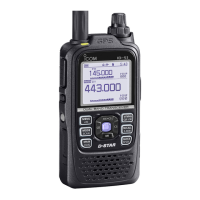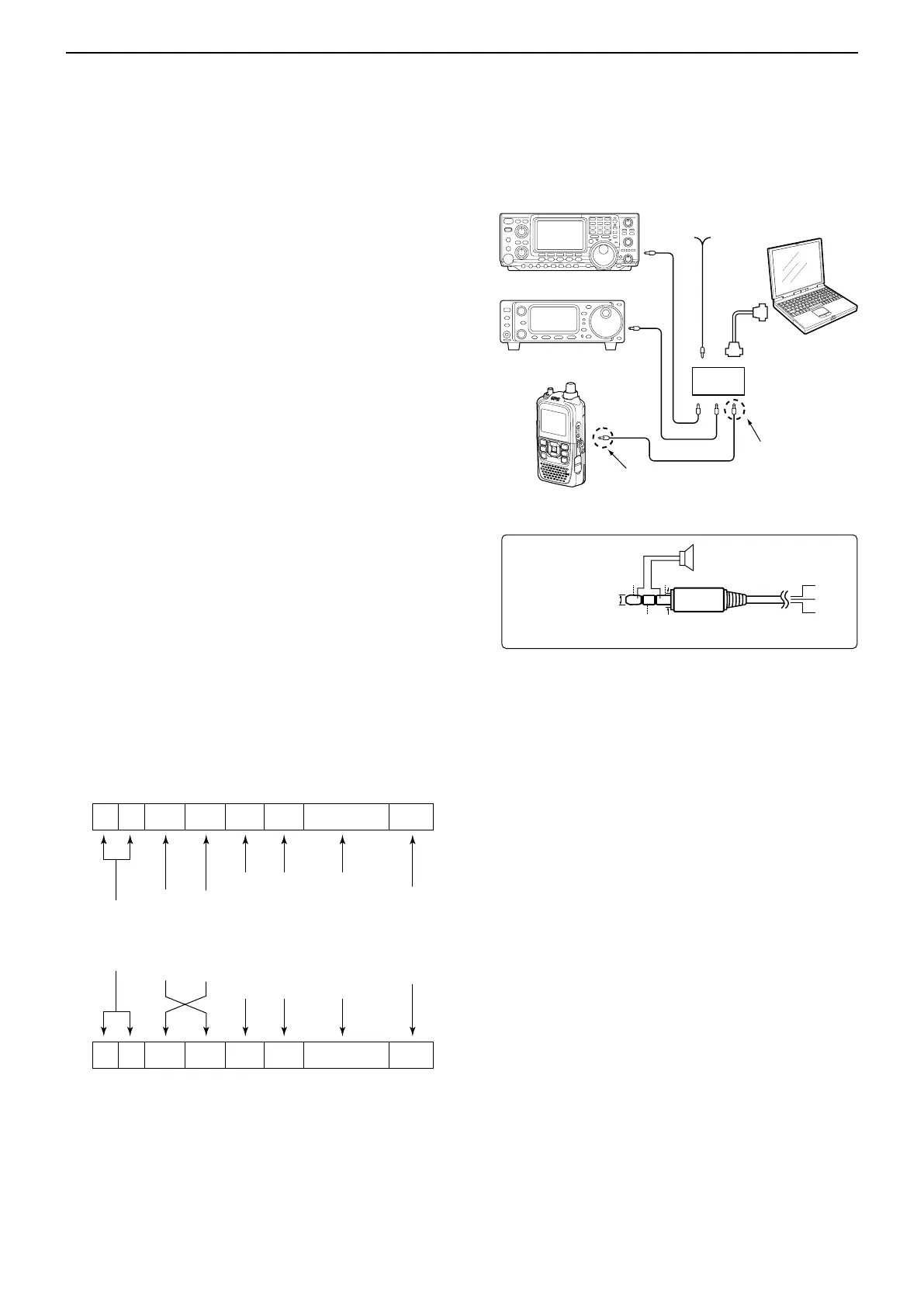17
OTHER FUNCTIONS
17-22
D Data format
The CI-V system can be operated using the following
data formats. Data formats differ, depending on the
command numbers. A data area or sub command is
added to some commands.
■ CI-V information
D CI-V data setting
Set the ID-51A/E’s address, data transferring speed
and transceive function. See page 16-78 to set the CI-V
setting using the MENU list screen.
Function > CI-V
D CI-V connection example
The transceiver can be connected through an optional
CT-17 ci-v level converter to a PC equipped with an
RS-232C port.
The Icom Communications Interface-V (CI-V) controls
the transceiver.
Up to 4 Icom CI-V transceivers or receivers can be con-
nected to the PC.
See the CT-17 instruction manual for details of remotely
controlling a transceivers and receivers.
* Use the cable illustrated to the right. No received audio is
heard when the supplied control cable, that comes with CT-
17, is used for the connection.
CT-17
9V〜15VDC
RS-
232
C
cable
ID-51A/E
personal
computer
GND
I/O
SP
SP
GND
SP
I/O
¡Connections (ID-51A/E side)
*No speaker is necessary for the CT-17 side.
3-conductor 3.5(d) mm
plug must be used.
2-conductor 3.5(d) mm
plug must be used.
3.5(d)mm
Less than 4.5(d)mm
FE FE 86 E0 Cn Sc Data area FD
Preamble
code (fixed)
Transceiver’s
default address
Controller’s
default address
Command number
(see the command table)
Sub command number
(see the command table)
BCD code data such as
for frequency, memory
number entry
(see the data content description)
End of message
code
(fixed)
oller
qwerty u
FE FE E0 86 Cn Sc Data area FD
qwer* ty u
*The reply messages from the transceiv
er are the command “FB” (OK)
or “FA” (NG).

